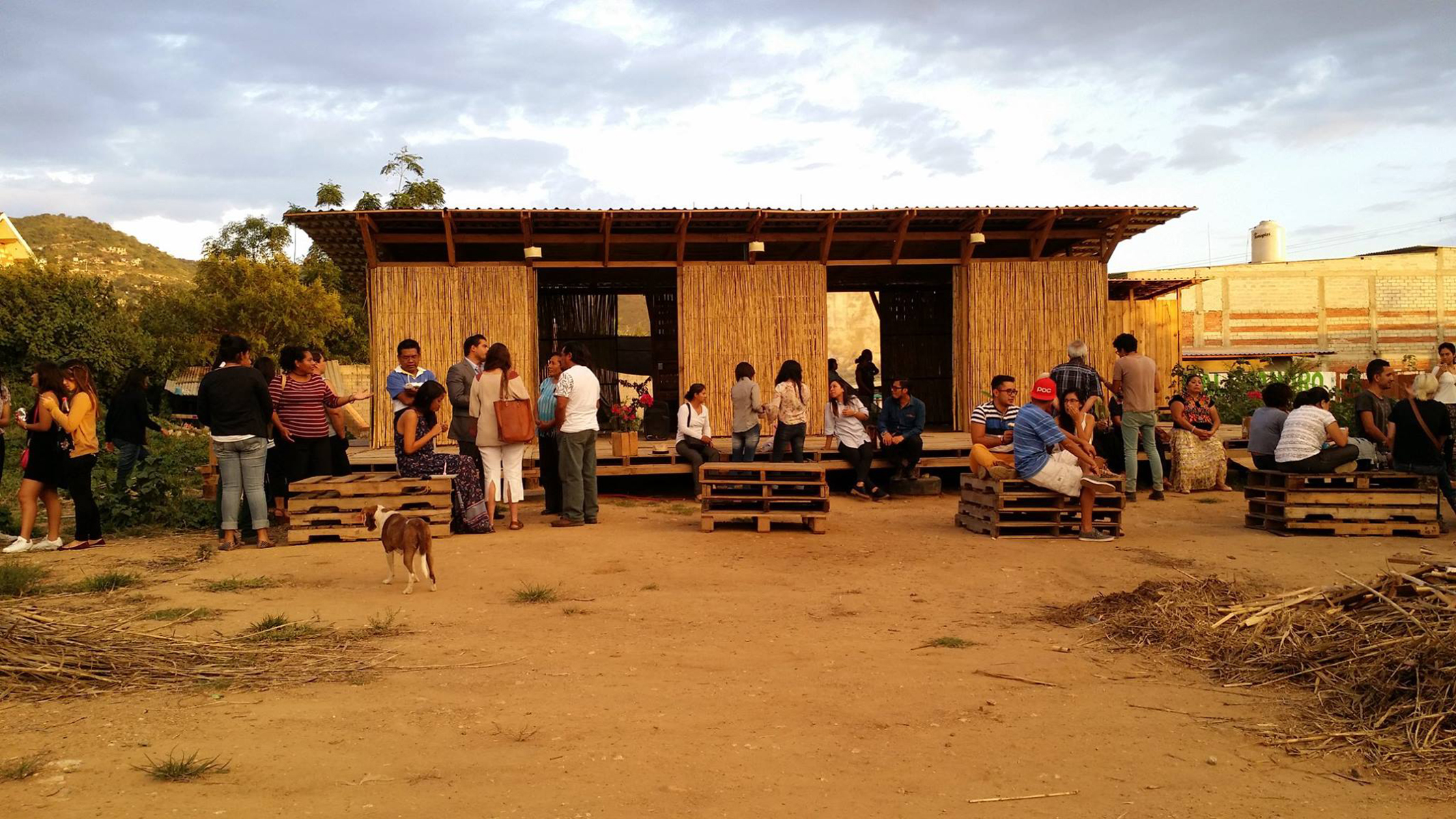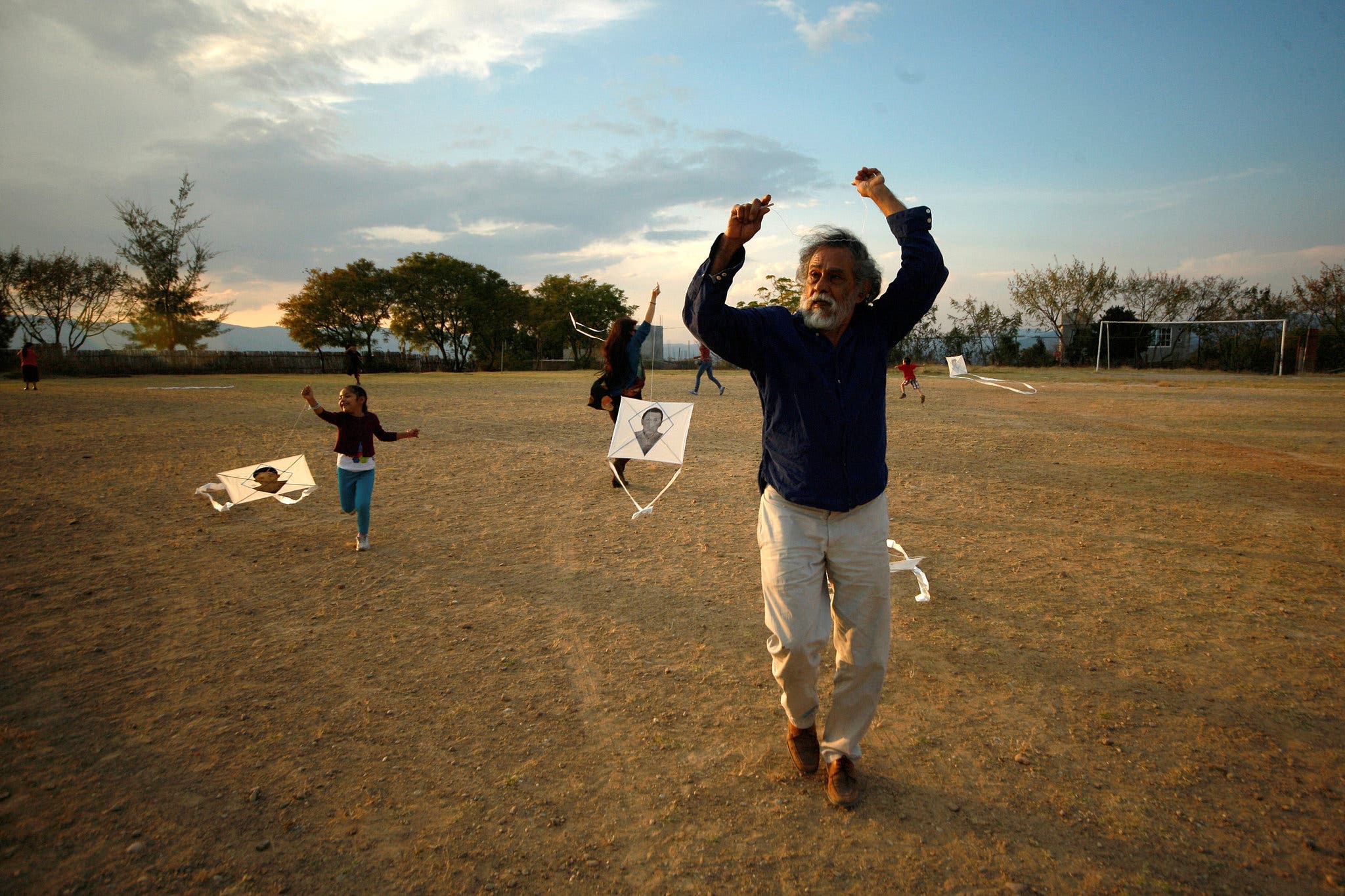Juan Carlos Jiménez: How did your relationship with education and artistic processes begin?
Learning From Different Ways of Accompanying Each Other
La Coyotera (Umecuaro, Mexico) is a workshop studio and residency program that aims to provide a natural environment for creating art projects. Built and run by artists Carmen Jacobo Iturbide and Kees Ouwens, they organize Land Art events around the site in collaboration with local, national and international artists, as well as various cultural events such as exhibitions, music concerts and lectures.
Furthermore, they are actively involved in educational projects for the local community and other various cultural projects that take place in the rural village of Umecuaro. La Coyotera also offers a residency program for professional artists to work on their art projects, with a residency cabin and studio available for usage in the way they see fit, often engaging the community in the making process.
The Beginnings
Carmen Jacobo: When I was 28 years old, I started studying in the free workshops of Casa de Cultura, with a great desire to learn drawing and painting. Soon after, I was offered the opportunity to teach a summer course at Casa de Cultura, and that's when I discovered that I liked teaching. I stayed there for many years, teaching drawing and painting workshops for children. That's when I realized that to this day, the process or the teaching part is the one that remains within the artistic matter, not only learning, but teaching.
JCJ: And yet you are connected to the formative processes and the ceramic and sculptural workshops, the development of spaces for residencies, as structured here at La Coyotera. These work spaces are also spaces for teaching and learning. How do these spaces of production for your personal work become spaces shared with people and communities? How do you currently practice teaching and how do you take into account the learning you are receiving or trying to generate?
CJ: From the beginning, La Coyotera was designed not only for our personal production, but also for residencies and working with other people. Over time, many projects have been born here, so we have refined and modified the way we work here, apart from the residencies.



Kees Ouwens: Sure, this place is also for the community. We have a relationship with the community of Umécuaro, and when we invite artists from outside Mexico to the residency, people understand these things. Here, everyone knows what we are doing. It takes a long time to get to this point, but after five years of working with this space, I like it a lot.
CJ: You can't imagine the place without working with other people, focusing on collaboration in its various forms, whether through residencies, invitations, project development, or working with the community. When I left the Casa de Cultura, I quickly realized that I missed having young students, and Kees told me: don't be sad, look for them! And that's how I came to the Telesecundaria, to ask them to let me teach, and I do it as social work, because it's a necessity for me to teach. This link has worked perfectly for us when artists come to do a residency and they need to work with the social, with the community, because the link is already made, both with the young people of the town and with their parents.
La Coyotera
JCJ: How did the process of settling in the community of Umécuaro unfold? How did you choose the location and what needs did the design of the house workshop respond to? How did this lead you to develop strategies to integrate into this place, which is rural and also a lake community? How have you been received and how has this relationship changed?
KO: I wanted to settle here in Mexico in a place where I could build a studio, but being Dutch, it was very important for me to have water nearby, a river, a lake or something.
CJ: Yeah, and we understand that for a small town of 300 people, it is difficult for someone to come to your space, to your environment. And the studio is big compared to some of the small houses in town, so it's understandable that some people felt rejected.
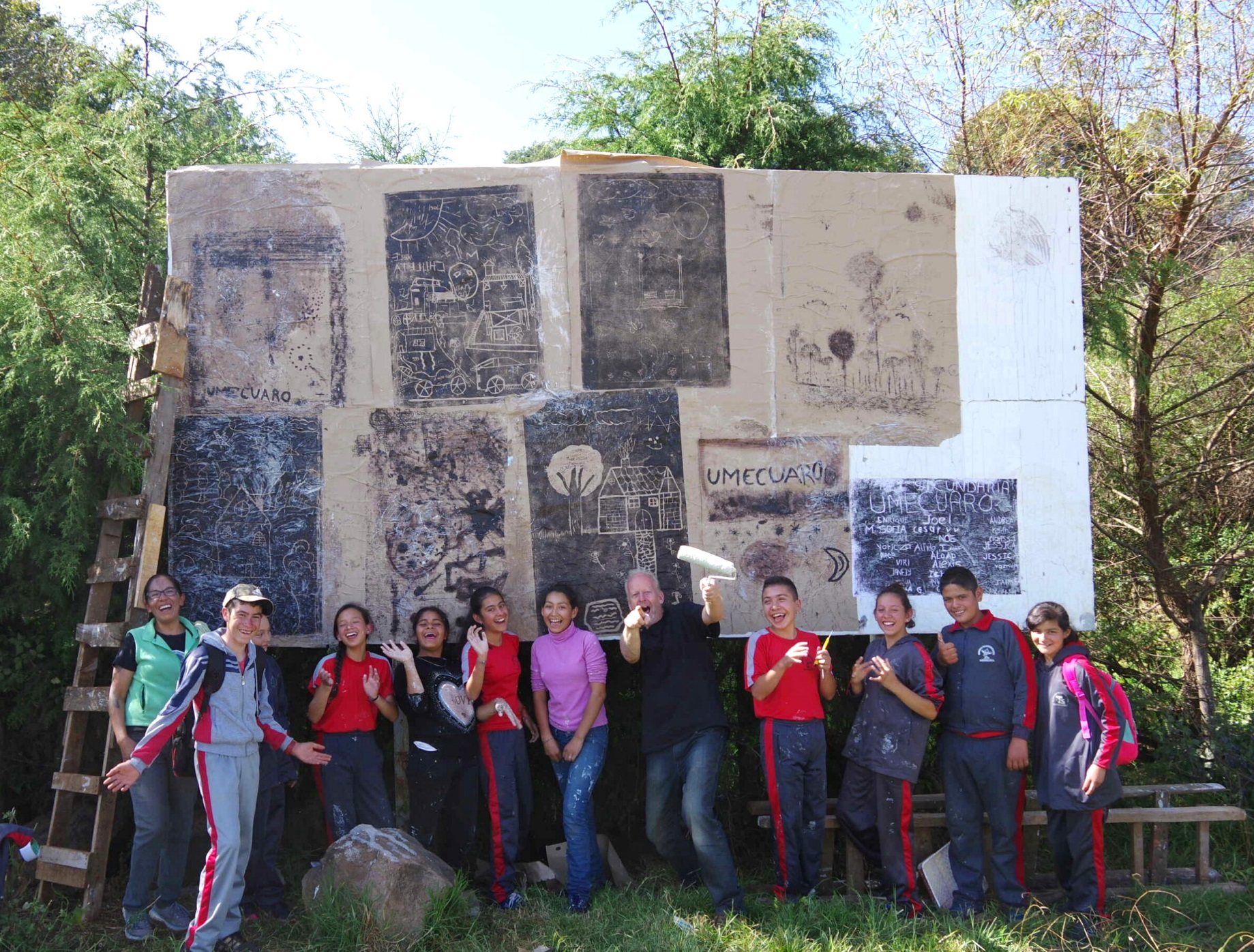
KO: I felt a little bad too, because we came and entered their land, where they had lived for years without electricity, with a small house, and I thought it wasn't right for me either; I had to do something or give something back to the community, not abuse it and just do what I wanted to do.
CJ: When we have artist residencies that involve a lot of artists, we try to get everyone in town to participate. For example, if we need someone to cut a lot of branches, we call Don Gume; if we need someone to make bricks or adobes, we call Don Rodo. We try to involve the people in the community so that they know what is being done and I think that many in the village have already understood that and we are accepted.
KO: The main reason we were accepted very quickly is that Carmen teaches classes to the children, and the children come home, show their work, and their parents start to see things differently. Because they are very stubborn here, they don't like new things, and I understand that, but education helps a lot.
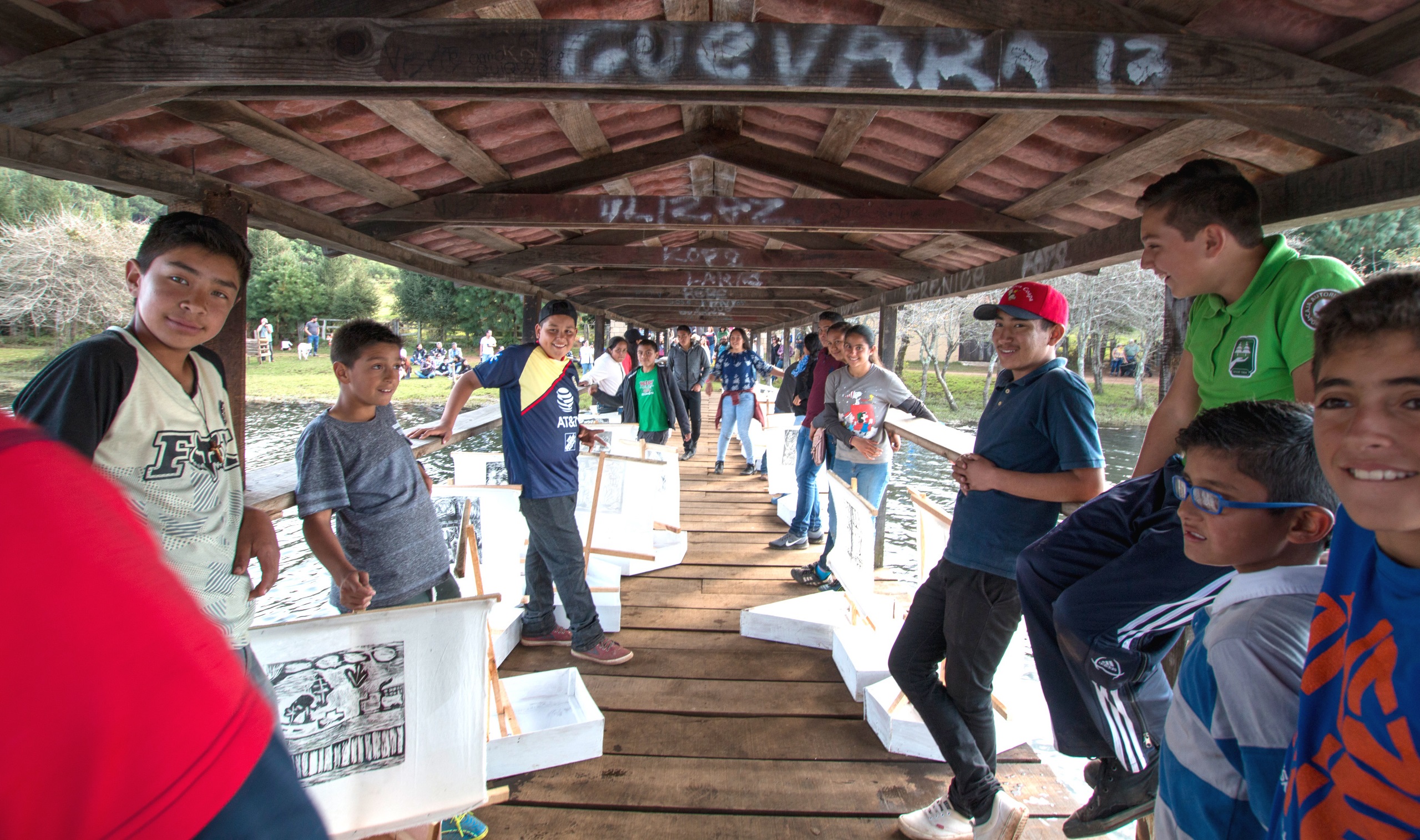


CJ: Yes, because we can't forget that although we're close to Morelia—and Umécuaro is part of the municipality of Morelia—we're in a completely rural area, which is something beautiful and we still like it, but there have never been any artistic manifestations in this place, so the kids have never had any access... I don't know how many generations have gone through the Telesecundaria, but they have never had art classes. We also try to bring in events by colleagues, dance, theater, and music that we bring in from Morelia, so we also act as a link for other disciplines.
Community
JCJ: These processes that you have been talking about have to do with the connection with the community—the local one and the one that you are forming in this relationship with La Coyotera, where these interactions take place—but at the same time, each of you has your own line of work. What are the concerns behind the projects you develop individually, what materials do you use, and what are the technical challenges you have encountered in your most recent projects?
KO: I am a stone sculptor. When I lived in Japan for 35 years, I traveled a lot around the world making sculptures in large spaces with my favorite materials, granite and basalt, and when I moved here, I wanted to work with the same materials, but it's very complex because they exist, but people don't want to sell them.
CJ: It has also changed my production situation. Maybe because I live here I am happy, I am not worried that I have left my painting aside. I think I am enriching or evolving my work, I am not a repetitive creator or one who stays in the same thing, we are both very dynamic people.
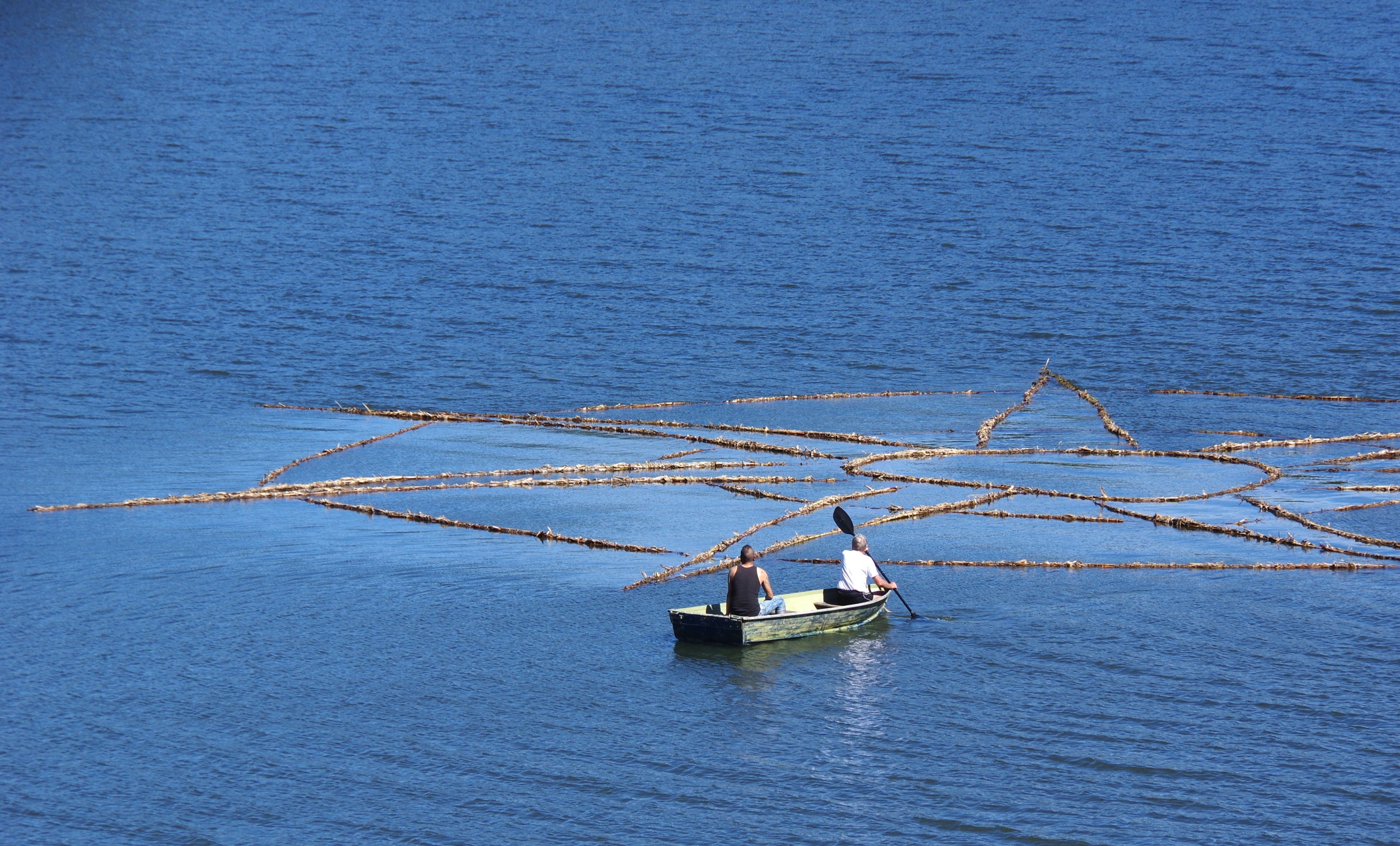
KO: There are artists who come here for land art, who usually have their own ideas in choosing their site and building installations, but when it is ready and the installation is put in place, the work changes, and the site, and the idea change. This is very important to refresh your mind and see other ways of seeing the works, not only the object but the environment, and see other ways to think about your work.
CJ: Yes, it is very different to develop all this in the city than in the rural area, it would not be impossible but it would be very different.
JCJ: What are the dialogues you pursue with the different works you do, both in your individual work and in the structuring of the residencies, the workshop and the communication or participation with the people and the environment? That is to say, for you, the community is important, the values of the artistic work; in the art market you have developed strategies that have to do with establishing yourselves here, but also with how you understand the circulation of the work of art. In short, what concepts, artists, or ideas are important to you nowadays and how do they relate to your work?
CJ: I suppose the path of establishing ourselves here has been easy and unique. I say this because the fact that this is an open space forces you to generate more and more projects. We have developed projects that we had not thought of. And I think that in all this work of collaboration, of exchange with other artists, of receiving them and letting them develop their projects here, the only thing that leads you to is the development of more projects. We have temporarily left personal production, but I think we have both increased the development of projects that have to do with art in general.
